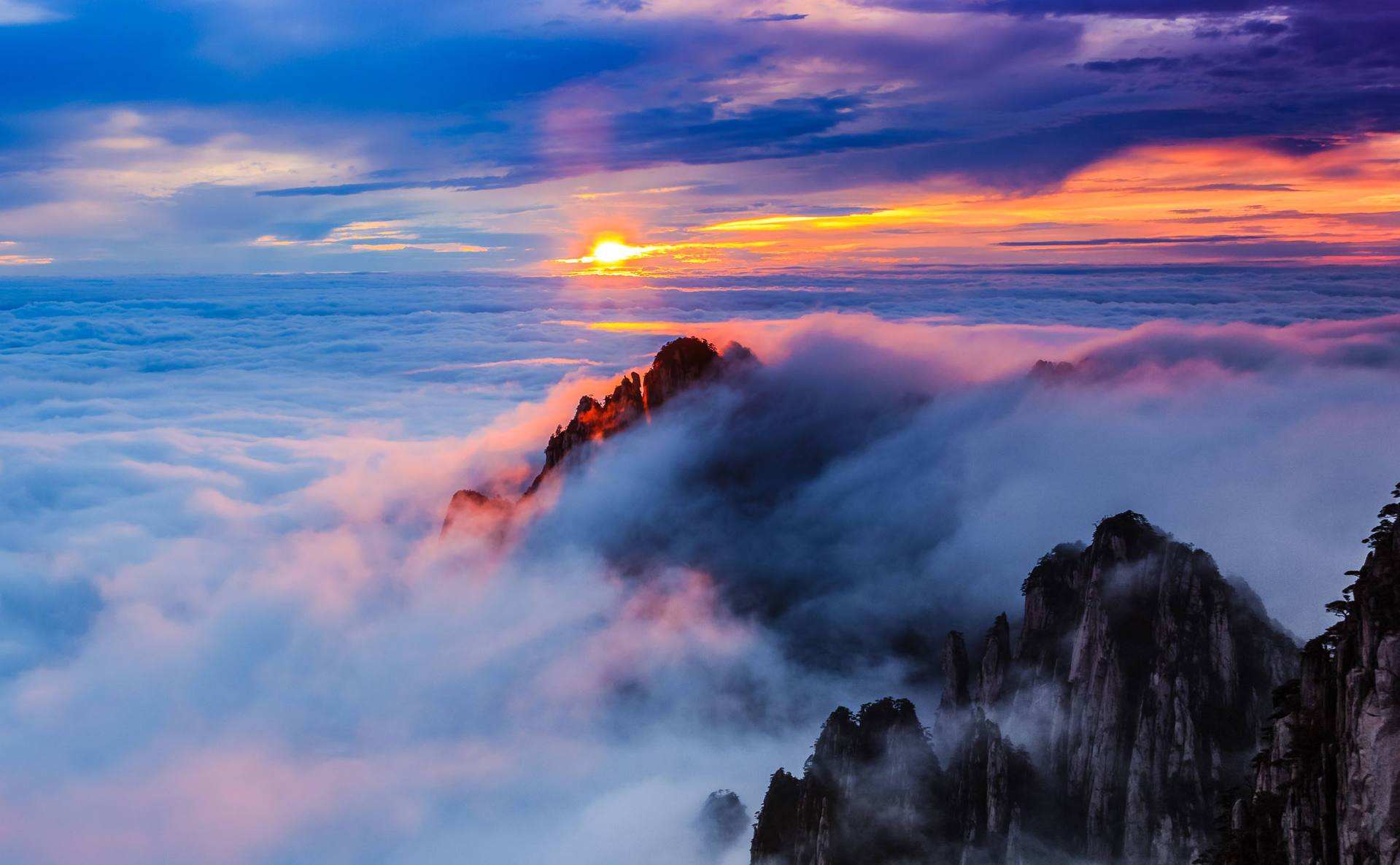Overview
Chinese Name: 黄山
English Name: Mount Huangshan,Yellow Mountain(s), Huangshan
Location: Huangshan City, Anhui Province
Type: Natural landscape
Rating Level: AAAAA (5A)

Brief Introduction
Mount Huangshan黄山 was originally called Yishan黟山, located in southern Anhui, rising over 1800 meters above sea level and its scenic areas covering 154 km2. It owes its unique scenic value to five major factors, queer pines, grotesque rocks, the sea of clouds, hot spring, and winter snow.
Huangshan is a frequent subject of traditional Chinese paintings and literature, as well as modern photography.
In 1982, Huangshan Scenic Area was declared the first batch of national key scenic spots by The State Council. In 1985, The Huangshan Scenic Area was announced by China Tourism News as one of the top ten scenic spots in China. In December 1990, The Huangshan mountain was listed in the World Cultural and Natural Heritage List by UNESCO.

Huangshan has formed approximately 100 million years ago and gained its unique rock formations in the Quaternary Glaciation. One legend of his name is that Huangshan was the location from which the Yellow Emperor ascended to Heaven. Another legend is that once Huang Di (the Yellow Emperor) made pills of immortality in this mountain.

As a tourist destination, it boasts of combining the masculine grandeur of Mount Taishan泰山, the grotesque splendor of Mount Huashan华山, the mist and clouds of Mount Hengshan衡山, and the waterfalls of Mount Lushan庐山.
To facilitate the make-it-to-the-top trip, a 2000-meter-long cableway has been put into operation.
What is worth to visit and see?
Five wonders
Huangshan is famous both at home and abroad for its “five wonders” and extensive Hui culture, and is known as “the No.1 wonder mountain in the world”. As the saying goes ” One visits no mountains after the Five Sacred Mountains. But after Mount Huangshan, one has no eye for the Five Sacred Mountains”
It has 72 famous peaks with Lotus Flower Peak莲花峰 at the highest, Heavenly Capital Peak天都峰 at the steepest, and Bright Summit光明峰 at the flattest. These three peaks are the main peaks.
The five unique landscapes of Huangshan Mountain in Anhui Province, China. They are queer pines, grotesque rocks, the sea of clouds, a hot spring, and winter snow. Huangshan has three famous waterfalls “the word waterfall”人字瀑, “Baizhang Spring”百丈泉 and “Julong waterfall”九龙瀑.

Growing on peak-tops or from crevices, Mount Huangshan’s spine trees are odd in shape and exquisite in beauty. To the Chinese, Huangshan’s pines are epitomized as the strength, and resilience of nature. Greeting-the-Guest Pine has actually become a symbol of Mount Huangshan

There are grotesque rocks on almost every peak of Huangshan, which were formed during the Quaternary ice age more than one million years ago. Like the Flower of a Dreaming Pen笔梦生花, a Monkey Gazing at the Sea猴子看海and Turtle Peak鳖鱼峰.

Mangrove-covered clouds, patches of autumn leaves floating in the clouds above, this is a rare phenomenon in Mount Huangshan. Huangshan has been a land of clouds and mist since ancient times. Its magnificent and spectacular “Sea of clouds” is famous for its beauty, triumph, wonder, and illusion.
The area also is host to notable light effects, such as the renowned sunrises. Watching the sunrise is considered a “mandatory” part of visiting the area.

Chapter four is the Mount Huangshan hot springs, deriving from the altitude of 850 meters underneath the Ziyun peaks紫云峰, water containing bicarbonate, drink, or bath. The waters are said to cure stomach trouble, nervous prostration, skin disease high blood pressure, etc.

Huangshan has an average of 62 days of rime and 35.9 days of rime every year. Huangshan is the most granular rime when the temperature is -2 to -7℃ and when the fog drops expand to drizzle, it can form rime.

Huangshan is not only a beautiful mountain of nature but also a rich art treasure. While enjoying the beautiful scenery, scholars of all dynasties left a vast number of literary works, more than 20,000 of which have been handed down so far.